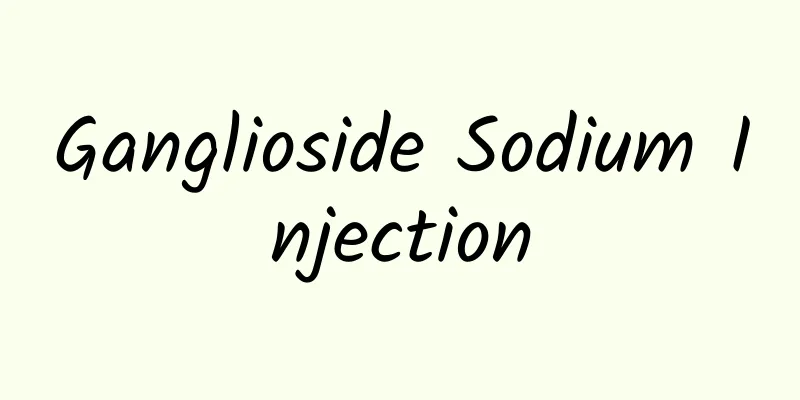Ganglioside Sodium Injection

|
Ganglioside sodium injection is a drug used to treat traumatic central nervous system injury or vascular central nervous system injury. It is also a drug for treating Parkinson's disease. When using this drug, you should be aware of some precautions. It has relatively few adverse reactions and can promote neural reconstruction, including the survival of nerve cells, axon growth, etc. Pharmacological action : Monosialotetrahexosylganglioside can promote the functional recovery of central nervous system damage caused by various reasons. The mechanism of action is to promote "neural remodeling (including nerve cell survival, axon growth and synaptic growth). Monosialotetrahexosylganglioside has a protective effect against secondary neurodegeneration after injury. Monosialotetrahexosylganglioside has a positive effect on cerebral hemodynamic parameters and brain edema caused by injury. Monosialotetrahexosylganglioside reduces neuronal edema by improving the activity of cell membrane enzymes. Animal experiments have shown that monosialotetrahexosylganglioside can improve behavioral disorders caused by Parkinson's disease. Dosage: 20-40 mg per day, injected intramuscularly once or in divided doses, or slowly intravenously as directed by your doctor. In the acute stage of the disease (especially acute trauma): 100 mg per day, intravenous drip; after 2 to 3 weeks, change to a maintenance dose of 20 to 40 mg per day, generally for 6 weeks. For Parkinson's disease, the initial dose is 500-1000 mg by intravenous drip; from the second day onwards, 200 mg per day by subcutaneous, intramuscular or intravenous drip, generally for up to 18 weeks. Note: Before using this product, please read the instructions carefully and use it according to your doctor's advice. [Use in pregnant and lactating women] According to literature data, no adverse reactions were observed in various animals when using monosialotetrahexosylganglioside during pregnancy and lactation. [Use in Children] So far, there are no reports of adverse reactions in children using this product. [Use in Elderly Patients] So far, there are no reports of adverse reactions in elderly patients using this product. [Drug Interactions] No interactions between this product and other drugs have been found so far. 【Overdose】 There is no report of overdose symptoms of this drug so far. Clinical reports show that a daily dose of 1000 mg is still well tolerated. |
<<: Sciatica symptoms in thigh
>>: How to treat neuralgia caused by herpes zoster
Recommend
What to do with soreness on both sides of the lower abdomen
For female friends, gynecological diseases need t...
How to make stew pot sauce
Many people like to eat stewed pot, especially in...
What are the symptoms of acute cervical sprain? How to treat it?
In life, people will inevitably suffer from cervi...
Clear fluid constantly leaking from the urethra
There is one very different thing between the mal...
The reason why your mind is super clear when you sleep with your eyes closed
Some people will experience a symptom where they ...
Is prickly heat contagious?
Prickly heat is a common skin disease among frien...
How long after medical abortion can I have sex?
Medical abortion is also a relatively common meth...
What to do with anal prolapse? What medicine to use?
Don't worry if you have rectal prolapse. You ...
What is the cause of the red, swollen and itchy big pimples?
The appearance of large bumps on the skin, which ...
How to treat eczema and detoxify?
In fact, it is not very difficult to treat a dise...
Serous lochia
Serous lochia generally refers to a large amount ...
How long does it take to recover from a stroke?
Cerebral infarction, a serious brain disease, can...
Check out the diet for pregnant women: 4 kinds of fruits to help you get a good pregnancy
Maintain the ovaries, regulate the uterus, regula...
It turns out that Jizhi Syrup has so many benefits
Jizhi Syrup is our most common medicine for treat...
How to eliminate sexual desire
In life, everyone has physiological needs and phy...









